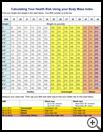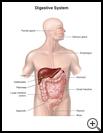
Obesity Surgery
What is obesity surgery?
Obesity surgery (also called bariatric surgery, gastric bypass surgery, metabolic surgery, or gastric restrictive surgery) is an operation that can help you lose weight when other treatments for severe obesity have not worked. Severe obesity is defined as being more than 100 pounds overweight or having a body mass index (BMI) of 40 or higher. The BMI is a measure of your weight in relation to your height.
The aim of obesity surgery is to change the gastrointestinal (GI) tract to limit the amount of food you can eat or change how food is digested. You will feel full more quickly when you eat, which means you will eat less.
Obesity surgery may be recommended if you have:
- BMI of 40 or more (severe obesity)
- BMI of 35 or more and an illness related to your obesity, such as diabetes, heart disease, or arthritis
- Adjustable gastric banding may be recommended if your BMI is 30 or more and you have diabetes that is not well controlled, heart disease, or other health problems caused by obesity.
Before having obesity surgery, you may need several tests to see if you are healthy enough for surgery, such as blood work, heart tests, and a sleep apnea test. You will need to learn about nutrition and see a behavioral counselor. You may need to follow a medically-supervised weight loss diet for up to 6 months before surgery.
How is obesity surgery done?
Before the procedure:
- Your healthcare provider will ask you to sign a consent form for obesity surgery. The consent form will state the reason you are having the procedure, what happens during the procedure, and what you may expect afterward.
- There is risk with every treatment or procedure. Talk to your healthcare provider for complete information about whether any of these risks apply to you:
- Anesthesia problems
- Bleeding
- Blood clots
- Infection
- Bowel problems
- Tell your healthcare provider if you have any food, medicine, or other allergies such as latex.
- Tell your healthcare provider if you are taking any medicines, including nonprescription drugs, herbal remedies, or recreational or illegal drugs.
- You will have a small tube (IV catheter) inserted into a vein in your hand or arm. This will allow medicine to be given directly into your blood and to give you fluids, if needed.
During the procedure:
- A cardiac (heart) monitor may be used to keep track of your heart rate and rhythm.
- Your blood oxygen level will be monitored by a sensor that is attached to your finger or earlobe.
- You may be given a sedative through your IV to help you to relax.
- You will be given medicines to prevent pain during your surgery. These may include:
- Regional anesthesia, which numbs a large area of your body. Depending on the medicine, you may be awake or asleep during the procedure.
- General anesthesia, which relaxes your muscles and puts you into a deep sleep. It also keeps you from remembering the operation. While you are asleep, you will have a tube in your throat to help you breath and to make sure you are getting enough oxygen. The tube may be removed before you wake up after the surgery.
- You may have a small tube (catheter) placed into your bladder to drain and measure urine.
- The surgeon will make one large cut or two or more very small cuts in your belly. If small cuts are used, your provider will put a thin, flexible, lighted tube with a camera (called a laparoscope) and tools through the small cuts to see the stomach and intestines.
- Obesity surgery may be done in the following ways:
- Gastric banding (LAP-BAND): A band is placed around the upper part of your stomach. A soft cap (port) connected to the band is placed under the skin near your stomach. Fluid can be injected or removed with a needle inserted through the port. The fluid tightens the band to control the size of the stomach and limit the amount of food you can eat at one time. Fluid can be removed to relax the band if necessary.
- Roux-en-Y gastric bypass surgery (RYGB): Much of the stomach, which is normally the size of a football, is stapled shut. A small pouch of stomach, about the size of an egg, is then connected to the small intestine.
- Vertical sleeve gastrectomy (VSG): Most of the stomach is removed, leaving a small tube of stomach, called a gastric sleeve, connected to the intestine as it was before the surgery.
- Biliopancreatic diversion with a duodenal switch (also called BPD-DS or duodenal switch): A large part of the stomach is removed, leaving a gastric sleeve. The stomach will still move food into the top part of the small intestine called the duodenum. The duodenum will be connected to the top part of the large intestine.
- Vagal nerve blockade (VBLOC): Electrodes are placed onto the lower part of the stomach and attached to a battery pack. Electrical signals block the vagus nerve in the stomach to decrease feelings of hunger.
- Intragastric balloon system: One or two balloons filled with salt water are placed in the stomach to take up space. The balloons make you feel full and decrease the amount of food you can eat.
After the procedure:
- You will be checked often by nursing staff.
- There will be a dressing on your belly. The dressing will be checked and changed by your provider or the nursing staff as needed.
- Your provider may prescribe medicine to:
- Treat pain
- Treat or prevent an infection
- Replace vitamins and minerals that your body is no longer able to absorb from the food you eat
- Treat or prevent gas and bloating
- Your provider may recommend other types of therapy to help relieve pain, other symptoms, or side effects of treatment.
What can I do to help?
- You will need to tell your healthcare team if you have new or worsening:
- Bloating, cramps, or pain in your belly
- Black, tarry bowel movements
- Blood in your bowel movement
- Nausea
- Vomiting, especially with blood or dark brown or black material in the vomit that looks like coffee grounds
- Symptoms of dehydration, which may include dry mouth or eyes, weakness, little to no urine output
- Dizziness or lightheadedness
- Heartburn
- Redness, swelling, pain, warmth, or drainage from your surgical wound
- Fever, chills, or muscle aches
- Depression
- Ask questions about any medicine, treatment, or information that you do not understand.
How long will I be in the hospital?
How long you stay in the hospital depends on many things, such as your general health and why you needed surgery. The average amount of time to stay in the hospital after obesity surgery is 1 to 3 days. Talk with your provider about how long your stay may be.
Last modified: 2016-02-18
Last reviewed: 2016-07-15


